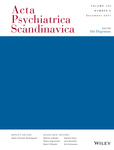The Influence of Childhood Trauma on the Real-World Effectiveness of Ketamine in Adults With Treatment-Resistant Depression
Abstract
Introduction
Childhood trauma is a well-established risk factor for major depressive disorder (MDD) and is often associated with attenuated response to conventional antidepressant therapies. Ketamine has emerged as an effective treatment for treatment-resistant depression (TRD), but the impact of childhood trauma on its effectiveness remains unclear. Herein, we aimed to determine whether childhood trauma influences the antidepressant effectiveness of ketamine in TRD.
Methods
A retrospective analysis was performed on data from adults with TRD (n = 83) who received four ketamine infusions at a community outpatient clinic. Participants were categorized based on cumulative trauma load (high vs. low) and specific trauma types, assessed by the Childhood Trauma Questionnaire (CTQ). Depressive symptoms were measured using the Quick Inventory of Depressive Symptomatology Self-Report 16-item (QIDS-SR16) at baseline and following each infusion. Linear mixed models and chi-square tests were used to evaluate the impact of trauma on ketamine's antidepressant effectiveness.
Results
Depressive symptoms significantly decreased across all participants over time, with an average reduction of 5.7 points in QIDS-SR16 scores (p < 0.001). High childhood trauma load was reported by 55% of participants. Response rates were 25% in the high trauma load group and 19% in the low trauma load group, while remission rates were 14% and 11%, respectively. However, there were no significant differences in antidepressant effectiveness (p = 0.572), response rates (p = 0.230), or remission rates (p = 0.397) between participants with high versus low trauma loads. Further analysis also revealed no significant associations between specific types of childhood trauma and antidepressant effectiveness, response, or remission outcomes.
Conclusion
Childhood trauma did not attenuate ketamine's antidepressant effectiveness in TRD. These findings support ketamine as a viable treatment for individuals with TRD, including those with significant trauma histories. Further research is warranted to replicate these findings and explore underlying mechanisms.


 求助内容:
求助内容: 应助结果提醒方式:
应助结果提醒方式:


